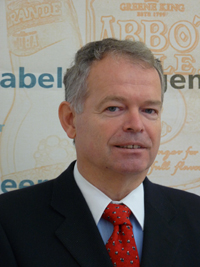The future of labels
There seems to be an amazing lot to talk about when it comes to paper labels. The 9th international label conference, which had been organised by Austria’s paper manufacturer Brigl & Bergmeister and was held in the mountain resort of Bad Hofgastein from 12 - 14 October 2011, certainly drew a large crowd, considering that the label business is comparatively small when you look at who’s producing the labels, who is refining them, who is printing them and who is providing the technology and machinery for it all.
This year’s conference was attended by 196 delegates from 26 countries, many of them from far-away Asian countries.
The conference benefitted again from Brigl & Bergmeister inviting a number of experts who dared to speak their minds. That must have gone down very well with the audience, all of whom were people in the know.
This year’s conference theme was "sustainable business perspectives" and the impression one got from listening to the remarkably frank presentations by label industry representatives was that the industry has faced up to many environmental challenges and done a lot of homework. Whether they submitted to outside pressures or whether they acted pro-actively is beside the point.
The point is that, in order to reduce the industry’s carbon footprint and larger environmental impact, manufacturers have implemented many initiatives, ranging from lowering energy consumption and improving the recyclability of metallised paper to developing biodegradable adhesives. Several printers too have looked hard at their environmental impacts and adopted measures to become more "green".
However, there is no denying that those in the paper label industry are given a hard time by plastic bottles and labels, which have become the beverage industry’s packaging of choice.
Although the paper label industry may point out again and again that paper labels ultimately use a renewable source - trees, that is - while the supply of crude oil is finite, the global survey conducted by Canadean, a provider of beverage intelligence, shows that in packaging PET bottles are advancing fast, especially for soft drinks and packaged water. Worse still, non‐refillable packaging (mostly plastic) accounts for over 90 percent of global soft drinks volume and is growing faster than refillable. And with plastic bottles come plastic labels. Fortunately, for the paper label industry, 69 percent of global beer is bottled in glass, often refillable, with cans taking a 24 percent share.
Thanks to Brigl & Bergmeister’s sure hand in picking speakers, several presentations dealt with future scenarios – consumers and consumption trends – and how they will affect the paper label industry.
Two presentations in particular stuck out. One was by Rowland Heming, a Belgium-based international packaging designer, and the other by Sam Waterfall, a marketing consultant with HMT, London.
Mr Heming drew our attention to the possible future of shopping. He explained how the global retailer Tesco in South Korea is using smartphones to facilitate easy home-shopping. As South Korea has more than 10 million smartphone users in a population of less than 50 million, it made sense to look at mobile shopping. This year Tesco’s local unit set up virtual grocery stores in locations like subway/metro stations so that people can literally do their grocery shopping while waiting for their train. Tesco reasoned, according to Mr Heming, that it made more sense to them to expand their online sales rather than spending a lot of money on opening new supermarkets.
In the video he showed, subway walls are plastered with posters that resemble the aisles and shelves of a supermarket. They’re lined from top to bottom with the products you’d normally see while grocery shopping. The only difference is that you can’t just grab the product and check out. The groceries each have a QR code which the shopper scans with a smartphone camera and adds to a shopping list. When the shopper has scanned the codes for all the groceries needed, he pays using his phone and the groceries are then delivered to his home.
QR-code-based shopping is something that could revolutionise how consumers shop for products in urban environments. The implication for beverage manufacturers and label producers? Packaging could become less important and different. Once the consumer has made his pick, based on a brand’s online image, why should supermarkets then deliver five bottles instead of a five-litre box? Or as Mr Heming put it: for packaging in its broadest sense, the internet releases us from the constraints of the box or bottle. Size becomes almost irrelevant when there is no shelf and the product experience becomes broader.
Product labels may become less relevant once consumers make their product choices based on a brand’s internet appeal, but as Mr Waterfall in his presentation drove home, they are far from becoming redundant. As he argued, labels and what’s written on them become central to health-conscious consumers and their purchasing decisions. According to Mr Waterfall, consumers are more and more motivated by needs and benefits so ingredients stated on a label can provide a reason to believe and increasingly… a reason to reject a product. So what’s happening? Thanks to the label, the product is no longer the product. The entire value chain is now exposed (think food miles) and food and beverage manufacturers had better bear that in mind.
In summary, those who though that a label was just a label, were quickly disabused of the notion by Brigl & Bergmeister’s conference.


